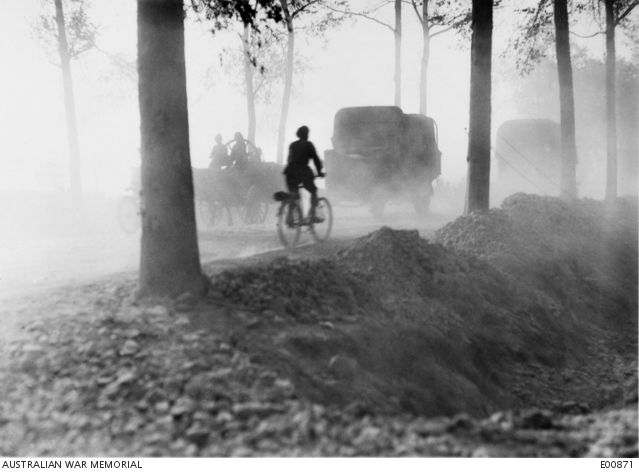William Gooey
William Gooey was born in 1894 in Victoria, one of nine children born to Chinese-born Henry Ah Gooey and Australian-born Emily Heffer. When the war began in 1914, 19-year-old William was working as a farm hand. He enlisted with the Australian Imperial Force (AIF) in Bendigo on 11 September 1914, listing his brother Harry as his next of kin.
In 1915 William’s other brother Charles enlisted with the 5th Battalion. The following year he was discharged for family reasons, and he later re-enlisted for home service.
William enlisted a second time in June 1916. It is unclear if he was rejected from service, was discharged from his initial enlistment, or whether the paperwork was completed and processed. His earlier record was crossed out with no explanation, and there is no evidence to suggest he embarked for overseas service in 1914. On his 1916 attestation form, William stated that he had never been involved with the armed forces, nor had he ever been “rejected as unfit for His Majesty’s Service”.
When William first tried to enlist in 1914, the medical report did not note any distinctive marks on his body, but his 1916 enlistment papers reported that he had scars on both knees, an eye, a forearm and the neck. Information relating to his next of kin had also changed by 1916, as William nominated his sister, Mrs Eliza Keighran, for this role. A note on his record stated that his parents were deceased, and that he had no dependents. He was allocated to reinforcements for the 13th Light Horse Regiment.
William travelled to England on the troopship Ulysses in October 1916. Two months after he arrived, he was admitted to hospital suffering from the mumps. William recovered and was sent to France on the Western Front in April 1917, where he transferred to the 4th Field Artillery Brigade as a gunner and a driver.
After spending most of 1917 in France during the costliest year for Australia in terms of casualties, William became ill and travelled to England for treatment. After returning to France in June 1918, he transferred to the 2nd Divisional Ammunition (Artillery) Column, which was responsible for getting ammunition from storage up to the front lines, using horse-drawn and motor transport. He rejoined the 4th Field Artillery Brigade later that year.
2nd Australian Divisional Ammunition Column moving forward during the Third Battle of Ypres, Belgium, 1917.
When the armistice was signed on 11 November 1918, William was one of over 130,000 Australian service personnel who were overseas, waiting to be repatriated. There were often long waiting times to embark on the journey home, due to limited numbers of ships and the need to care for the sick and wounded. The order by which people returned was based on their length of service, family responsibilities, and how essential they were to the workforce. William desired an early return to Australia because of his long absence from home. He began his long voyage in June 1919, and was discharged from the AIF in August.
Australian soldiers disembarking from a troopship after returning from overseas, 1914 - 1918.
He was issued with the British War Medal, the 1914–15 Star, and the Victory Medal for his service. William’s records show that he requested assistance from the Australian Repatriations Department with obtaining employment after the war. He passed away in 1940, aged 46.
References
Ancestry, “Henry Ah Gooey”, https://www.ancestry.com.au/genealogy/records/henry-ah-gooey-24-rxp39 <accessed 25 June 2020>.
Australian War Memorial, “Anzac Voices”, https://www.awm.gov.au/visit/exhibitions/anzac-voices/1917 <accessed 24 June 2020>.
Department of Veterans’ Affairs, “Repatriation of Australians in World War 1”, https://anzacportal.dva.gov.au/wars-and-missions/ww1/politics/repatriation <accessed 24 June 2020>.
Golden Dragon Museum, “Charles and William Gooey”, https://www.goldendragonmuseum.org/events/chinese-anzacs/charles-and-william-gooey/ <accessed 25 June 2020>.
National Archives of Australia, service record, “William Gooey”, B2455: https://recordsearch.naa.gov.au/SearchNRetrieve/Interface/ViewImage.aspx?B=4774427 <accessed 24 June 2020>.
National Archives of Australia, service record, “Charles Gooey”, B2455: https://recordsearch.naa.gov.au/SearchNRetrieve/Interface/ViewImage.aspx?B=4774426 <accessed 25 June 2020>.
Virtual War Memorial Australia, “2nd Divisional Ammunition Column”, https://vwma.org.au/explore/units/311 <accessed 24 June 2020>.


